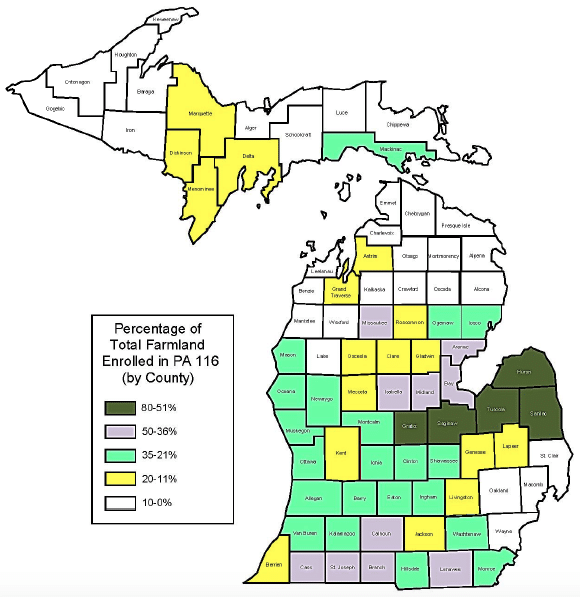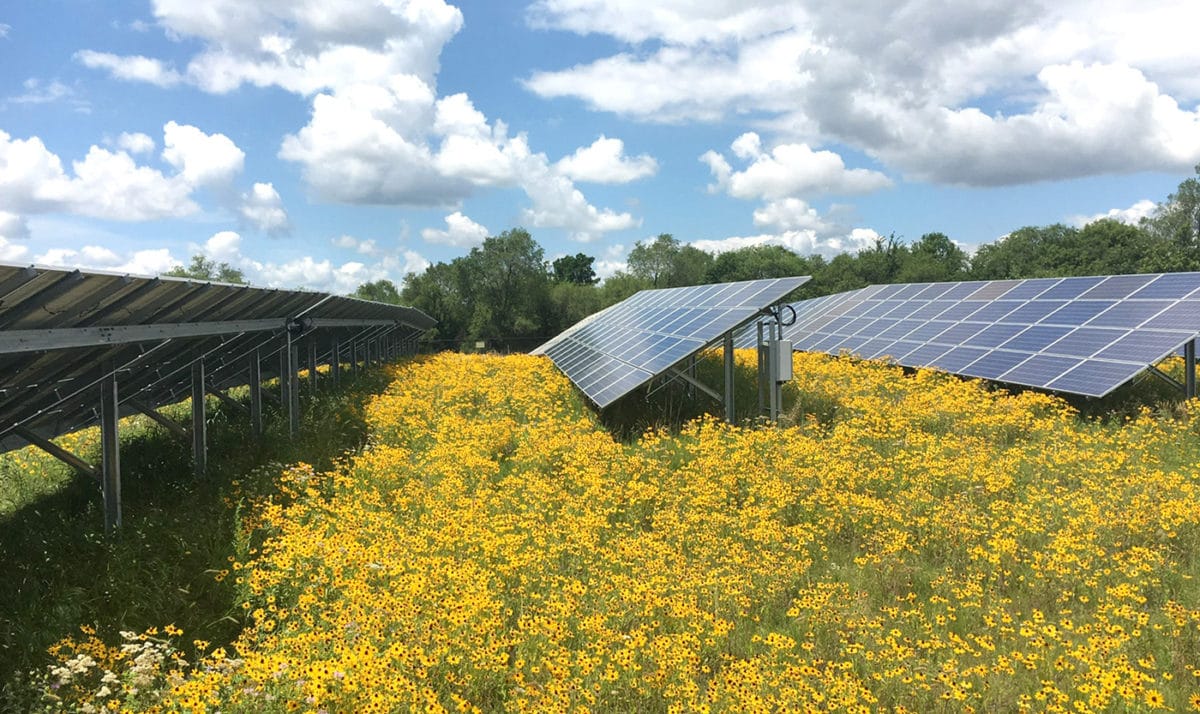Solar and farms have a complicated relationship. Conservation groups and at times authorities in a number of states have expressed concern about the use of farmland to host large-scale solar, with Oregon recently further limiting solar deployment on prime farmland.
Meanwhile, farmers and ranchers themselves are often the most outspoken proponents of solar, which can help them to both stabilize energy costs and gain a stable revenue from leasing their lands to larger projects. And this is not mere theory. Among other evidence hog farmers have emerged as a key defender of net metering in Iowa and large ranches in California have enthusiastically adopted large-scale solar.
 It is the latter consideration which appears to have won out in Michigan, with the state’s Department of Agriculture and Rural Development (MDARD) issuing a decision opening up farmland in a state preservation program to large-scale solar development, with a number of important caveats.
It is the latter consideration which appears to have won out in Michigan, with the state’s Department of Agriculture and Rural Development (MDARD) issuing a decision opening up farmland in a state preservation program to large-scale solar development, with a number of important caveats.
And this isn’t a small amount of farmland either. 5,300 square miles of the state are enrolled in the Farmland and Open Space Preservation Program, which provides tax incentives to keep land in agricultural use.
This represents more than 9% of Michigan’s land area, with the largest concentrations in The Thumb and other parts of Central Michigan near Saginaw Bay. This may explain the push to open up the program, as noted in the state’s press release.
…developers searching for farmland for large solar array projects are having difficulty finding areas that don’t include farmland in the preservation program
Solar development, with conditions
There are a number of significant conditions to the use of farmland under the program to host solar arrays. First, you can’t just find a developer to build an array on your protected farmland – the land for the facility must be necessary to complete a “larger, in-scale solar facility”, and then it has get get the necessary permits and approvals.
Also, landowners will not be able to claim the tax credits under the act governing the program (Public Act 116) from the time that construction starts until the panels, racking/tracking and assorted hardware is fully removed. In other words, you aren’t going to get a tax credit for protected farmland on the land you are hosting solar on. However, you can keep the land in the program and claim the credits for your other lands, as well as for the land both before and after it hosts solar.
The credits in question include not only an income tax credit, but also an exemption for the land from special assessments for sanitary sewer, water, lights or non-farm drain projects.
The owner also has to provide a bond or letter of credit to ensure that the solar project can be removed at the end of its useful life, and the land restored to farming. The state specifically suggests that landowners “may wish to designate all or some of these commitments” to developers as parts of leases or contracts.
Bees, farmers to benefit
These are not the only requirements; developers are additionally required to establish and maintain ground cover in order to achieve at least a “76” rating in the Michigan Pollinator Habitat Planning Scorecard for Solar Sites, which is achieved using a scoring system that rewards a vegetation plan, local wildflowers and limited pesticide use.
Bees aren’t the only beneficiary of this policy. Among the groups that participated in drafting the exemption is the Michigan Agri-Business Association (MABA), which issued a statement applauding the final decision.
“We are pleased with the Whitmer Administration’s resolution that will protect farmland while providing opportunities for rural communities to take advantage of the tax revenue, jobs and economic boosts that come with solar installations,” stated Jim Byrum, president of MABA.
As in other parts of the United States, the stable lease revenue that farmers can gain from solar is a welcome complement to the uneven fortunes of farming, and this was alluded to in a statement by MDARD Director Gary McDowell:
The change ensures that Michigan’s farmland is preserved so we can continue to feed our communities while also balancing the need to develop renewable energy sources. This is an exciting new opportunity for Michigan’s farmers to diversify while they continue to face challenging circumstances.
A Q&A on the use of solar under the program can be found on the MDARD website.
Of course, Michigan farmers can still host small-scale solar arrays on their property to offset their own use under the state’s net metering program, as long as these do not “substantially hinder” agriculture – and assuming that these systems are put online before the decision by state regulators to scrap the policy is fully implemented.
This content is protected by copyright and may not be reused. If you want to cooperate with us and would like to reuse some of our content, please contact: editors@pv-magazine.com.









By submitting this form you agree to pv magazine using your data for the purposes of publishing your comment.
Your personal data will only be disclosed or otherwise transmitted to third parties for the purposes of spam filtering or if this is necessary for technical maintenance of the website. Any other transfer to third parties will not take place unless this is justified on the basis of applicable data protection regulations or if pv magazine is legally obliged to do so.
You may revoke this consent at any time with effect for the future, in which case your personal data will be deleted immediately. Otherwise, your data will be deleted if pv magazine has processed your request or the purpose of data storage is fulfilled.
Further information on data privacy can be found in our Data Protection Policy.